News
March 2012
Fin Cop Wins Best Research Project at 2012 Current Archaeology Awards
 |
Archaeological Research Services Ltd have won 'Research Project of the Year 2012' for our Current Archaeology article 'Massacre at Fin Cop'. The awards were presented at the Current Archaeology Live event at Senate House in London by Julian Richards.
The Fin Cop Project is a lottery-funded community investigation by Archaeological Research Services Ltd and Longstone Local Local History Group along with support from the Peak District National Park Authority, English Heritage and a cast of hundreds of volunteers, schoolchildren and students.
For more information on the project click here.
December 2011
Fin Cop Nominated for Best Research Project at 2012 Awards
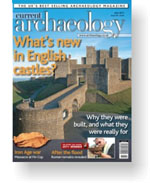 |
The Fin Cop Project, a lottery-funded community investigation by Longstone Local Local History Group and Archaeological Research Services Ltd, has been nominated for the Current Archaeology Award 'Research Project of the Year 2012'.
The Fin Cop Project has seen the involvement of a whole community in uncovering unexpected, macabre, but truly remarkable archaeological finds. For more information on the project click here.
To vote for Fin Cop as Research Project of the Year, please follow the link below.
November 2011
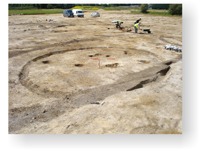 |
Tour of Iron Age Remains on the Upper Thames
ARS Ltd staff recently gave sixteen members of the Cotswold Water Park Trust an exclusive tour of the exciting archaeological dig taking place at the Moreton C. Cullimore quarry at Roundhouse Farm, Marston Meysey, Wiltshire. Discoveries of Iron Age archaeology at the site are contributing valuable new knowledge about the history of the Upper Thames Valley. To read more about the fascinating archaeological remains, click here.
New Downloads Available
The latest project report to be made available for download is the test pitting report from this summer's community archaeology project at Whirlow Hall Farm in Sheffield, download the report from the Whirlow Hall Farm Project page.
February 2011
Publication on Chalk Figure of the North York Moors
An article written by Tara-Jane Sutcliffe of Archaeological Research Services Ltd's Aerial Photographic team has been published in the Project Gallery of the latest issue of 'Antiquity'. The article tells the story of the conservation and camouflage of the White Horse of Kilburn and the way in which historic aerial photography can allow us access to hidden aspects of the past. The article can be found by clicking here.
December 2010
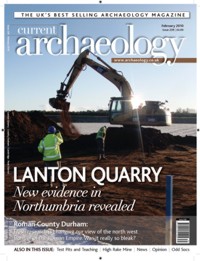 |
The Lanton Quarry site, currently under excavation by Archaeological Research Services Ltd, has been nominated for the Current Archaeology Award 'Rescue Dig of the Year 2011'.
Since 2006 ARS Ltd have carried out three seasons of excavation at Tarmac's Lanton Quarry in Northumberland, each one revealing more of the multi-period site and its fascinating history. For more information on the discoveries, ongoing excavations, and current schools outreach programme at Lanton Quarry click here.
To vote the Lanton Quarry site as Rescue Dig of the Year, please follow the link below.
November 2010
 |
The latest project report to be made available for download is the watching brief report for the Village Hall in Alderwasley, Derbyshire, a former chapel dating back to at least the 15th century. To read more about this fascinating rural site, download the report from the Project Downloads page.
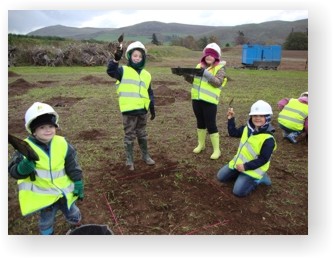 |
ARS Ltd and staff from Tarmac’s Lanton Quarry are currently working alongside seven schools in Northumberland to help children learn more about the past in their local area. Through the project, which is funded by English Heritage and Tarmac, the children are learning about the history of where they live and what it means to them. Each school is getting the opportunity to learn more about a working quarry and to get hands-on experience of what it is like to be an archaeologist.
ARS Ltd has carried out a number of excavations at Lanton Quarry and the site has proven to be archaeologically rich, with remains dating from the Mesolithic period through to the Anglo-Saxon period. To learn more about Tarmac, click here, and to learn more about the archaeology that has been discovered at Lanton Quarry click here.
October 2010
Dave Knight and Tara-Jane Sutcliffe of the ARS Ltd Aerial Survey team attended the Aerial Archaeology Research Group (AARG) Annual Conference in Bucharest, 16th-18th September 2010, where they made a presentation about aspects of the ongoing North York Moors National Park NMP project. The AARG conference provides a forum for the discussion of current projects and the application of aerial photography and LiDAR imagery, both key tools in modern archaeological investigation. To download a copy of the conference poster, which explored what aerial photography can tell us about the iconic Kilburn White Horse, click here.
September 2010
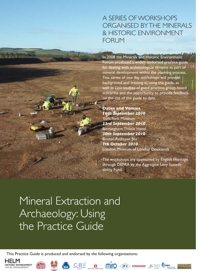 |
The Minerals Industry Research Organisation (MIRO) are holding a series of workshops involving representatives of the minerals and archaeological industries on applying the guidance within ‘Mineral Extraction and Archaeology: A Practice Guide’. The practice guide was authored by ARS Ltd on behalf of the Minerals and Historic Environment Forum (MHEF) in 2008. It explains the role of archaeology within the minerals planning process and offers guidance endorsed by the key organisations within both industries. The workshops are sponsored by English Heritage through DEFRA by the Aggregate Levy Sustainability Fund.
The next workshop will be held on 30th September 2010 in Bristol followed by 7th October 2010 in London. To find out more and to register for your free place at the workshops please download the flyer by clicking here.
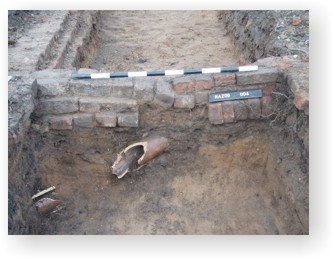 |
The latest project report to be made available for download is the evaluation report for Hazel Grove in Stockport. The evaluation was carried out in 2009 and revealed the foundations for a number of buildings dating from the early 19th Century. The report can be downloaded from the Project Downloads page.
August 2010
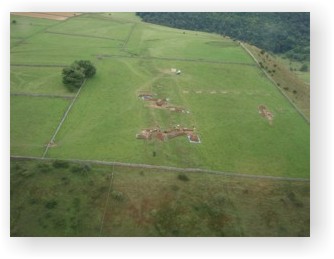 |
Following on from last year's three week community dig, Archaeological Research Services Ltd and Longstone Local History Group have come to the end of another five weeks of excavation at Fin Cop Hillfort. It was hoped that the excavations would shed some more light on the history of the Hillfort and would answer some of the questions that were raised by last year's dig. Further investigation of the hillfort ramparts has revealed exciting new information about the hillfort's construction as well as uncovering more human remains. For post-excavation updates keep checking the Fin Cop Hillfort Projects Page.
The Fin Cop Hillfort dig will feature this Sunday 29th August on the third program in the new series of 'Secret Britain' which will be shown at 9.00 in the evening on BBC1.
July 2010
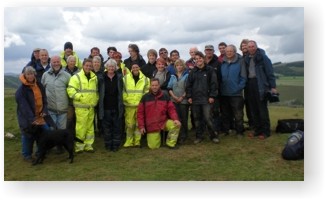 |
The Fin Cop Hillfort Project (Solving a Derbyshire Mystery) has won the award for Best Community Archaeology Project at the 2010 British Archaeological Awards. Archaeological Research Services and Longstone Local History Group would like to thank the hundreds of volunteers and schoolchildren who have made this project such a success. For more information on the British Archaeological Awards click here.
June 2010
Archaeological Research Services Ltd currently have vacancies for two new positions. Applicants are requested for an Aerial Photograph Interpreter and also for a HLF/IfA Workplace Learning Bursary Placement based around IT applications for standing building and landscape surveys. For more information visit our job opportunities page by clicking here.
 |
Archaeological Research Services Ltd Projects Officer Andrew Burn will be leading a guided walk for the Architectural and Archaeological society of Durham and Northumberland (click here for more details). The walk will take place along part of Druridge Bay on the Northumberland Coast, recently surveyed as part of the North East Rapid Coastal zone Assessment for English Heritage. During a short walk remains from early prehistory to the Second World War can be found surviving in a thin strip of land between an area of former open cast mining and the sea.
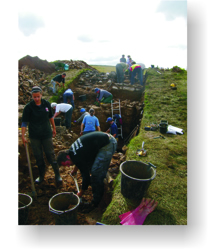 |
Following a wealth of interest in the local media, there are only a few places left to participate in the Fin Cop Hillfort Project this July and August. More details can be found at the project page and if you would like to volunteer to take part then email using this link.
To see some of the media coverage for the Fin Cop Project click on the links below:
- BBC News Online
- Yorkshire Post Online
- Matlock Mercury
- Sheffield Telegraph
- Peak District National Park Authority
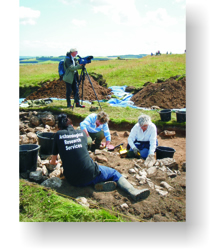 |
The Fin Cop Project - 'Solving a Derbyshire Mystery' has been shortlisted in the Best Community Archaeology Project category for the 2010 British Archaeological Awards awarded by the Council for British Archaeology (CBA) and hosted this year at the British Museum on the 19th July.
A few places are still available to take part in this year's excavations.
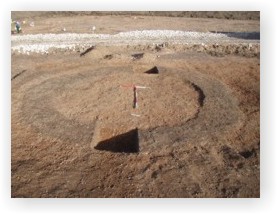 |
May 2010
The latest project report to be made available for download is the archive report for the Mercia Marina excavations near Willington in the Trent Valley. The report can be downloaded from the Mercia Marina project page and also from the Project Downloads page
The Archaeological Research Services website now includes a Project Downloads page under our Useful Info section. This new page collates all the downloadable reports relating to our varied projects into one handy place, though all existing reports can also still be downloaded from their relevant project pages.
The first new report available from the Project Downloads page gives details of a building survey which examined the former Killamarsh Central Station on the South Yorkshire - Derbyshire border. Look out for more downloads over the coming months.
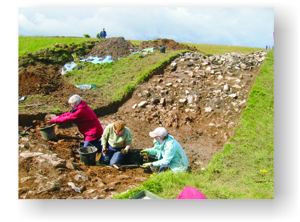 |
Following on from the success of last summer's 'Solving a Derbyshire Mystery' project, Longstone Local History Group have been successful in winning a second grant from the Heritage Lottery Fund to conduct further excavations at the enigmatic hillfort of Fin Cop in the heart of the Peak District. Archaeological Research Services Ltd will again be providing training and guidance on site and it is hoped that the 2010 excavations will prove as fascinating and fruitful as last year's.
If you would like to volunteer to excavate at Fin Cop this year, then email the project team using this link. Places will be on a first-come first-serve basis.
For more information on the 2009 investigations, visit the project page by clicking here
April 2010
 |
The latest issue of ‘Archaeology: County Durham’, the annual magazine detailing new discoveries in County Durham, has now been published and includes an article about ARS Ltd’s North East Coast Survey. The article details the work that has been carried out at Crimdon Dene in Durham as part of the English Heritage funded North East Rapid Coastal Zone Assessment. The NERCZA project is part of a country-wide investigation which aims to evaluate archaeological remains and heritage assets along the entire coastline of England by 2013. In the case of the North East Project, the area under investigation runs from Whitby to Berwick-upon-Tweed on the Scottish border.
The site at Crimdon Dene was highlighted during Phase 1 of the NERCZA (desk-based assessment and aerial photograph mapping) as being of importance due to the discovery of a flint scatter in the 1930’s. A survey, carried out by ARS Ltd, aimed to find the exact location of the flint scatter and also to record any other archaeological features in the surrounding area. A walkover of the site helped to establish that the scatter had most likely come from a spur of land in front of the Dene, and on further inspection it was discovered that some organic layers had been exposed possibly representing a preserved Mesolithic land surface. Samples are currently undergoing dating analysis. Surrounding the Dene there are also a number of World War II military remains including pillboxes and a gun emplacement, which have survived extremely well in comparison to other examples on the North East Coast. The recording of features like those at Crimdon Dene has contributed greatly to our knowledge of the threat which coastal erosion poses to the archaeological remains of our coastline. The full results of the work will be published later in the year.
March 2010
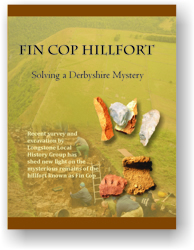 |
As part of the successful Fin Cop Hillfort Project - "Solving a Derbyshire Mystery" - Archaeological Research Services Ltd have produced a leaflet detailing the fascinating story which emerged through the course of last summer's fieldwork.
Click on the image to the right to go to the Fin Cop project page, where a copy of the leaflet can be downloaded.
 |
Archaeological Research Services Ltd have produced a guided walk leaflet for the Crowtrees Heritage Group exploring the history and archaeology of Crowtrees Colliery in County Durham. The colliery, situated five miles south-east of the city of Durham, was in operation during the 18th and 19th centuries and encapsulates the history of coal mining in this region. Originally opened in the late 18th century, the coal was won close to the surface and sold locally. In the 1830s the colliery was bought by locomotive pioneer William Hedley who expanded operations and shipped the coal by rail to Teeside. The colliery then passed through the hands of various owners, including W. Morrison who built the remains that can still be seen on site today, before finally closing in 1897.
ARS Ltd have a special link to the colliery, as Project Manager Ben Johnson’s great-great grandfather and great-grandfather both worked as miners at Crowtrees in the late 19th century, when census records showed they lived at the long-since vanished settlement of Cold Knuckles above the colliery.
Follow this link to the Crowtrees Colliery website, where a copy of the leaflet can also be downloaded.
February 2010
 |
In 2009 Archaeological Research Services Ltd and Longstone Local History Group investigated the hillfort at Fin Cop, which overlooks Monsal Dale in the Peak District. The project was a great success and a large amount of information was revealed about the hillfort and also archaeological remains from other periods on the site. The reports detailing the various stages of the project are now available to download from the Fin Cop Projects page.
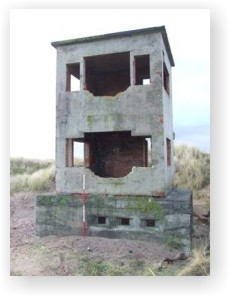 |
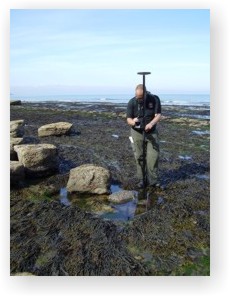 |
In January 2010 ARS Ltd completed the field survey element of the North East Rapid Coastal Zone Assessment on behalf of English Heritage. This second phase of work follows on from the desk-based assessment and aerial photographic survey of the coastline between Whitby and Berwick-upon-Tweed, which was completed by ARS Ltd in 2009. The project will provide detailed information about the archaeological remains along the North East Coast and assess the level of threat that they face from erosion. This data will then be used to better inform the ongoing management of these sites. Sites investigated ranged in date from the Mesolithic period through to the Cold War with many sites recorded for the first time.
In January 2010 ARS Ltd began the task of surveying and investigating Second World War defences within the Northumberland Coast Area of Outstanding Natural Beauty. The survey is intended to allow a better understanding of the nature of the surviving remains and to record any previously unknown evidence of World War II defences within the AONB. A walkover survey was undertaken with extensive photography and accurate mapping of the remains using GPSsurveying equipment. It is hoped that this fascinating work will help to interpret the surviving remains and also to inform on how sites such as these can be managed in the future.
 |
 |
|
A WWII pillbox with Dunstanburgh castle in the background |
A pillbox near Dunstan Steads that was constructed using concrete-filled sandbags |
 |
In 2008 ARS Ltd carried out an investigation at John Smeaton's Snuff Mill at Chimney Mills in Newcastle. This month, the site and details of the excavation appear in the 2009 Autumn edition of the 'Journal of the Association for Industrial Archaeology: Industrial Archaeology Review'. The article, written by Christopher Baglee and John Nolan of Northern Counties Archaeological Services analyses the results of the complete programme of works that was carried out on the site including the building recording and evaluation undertaken by ARS Ltd.
January 2010
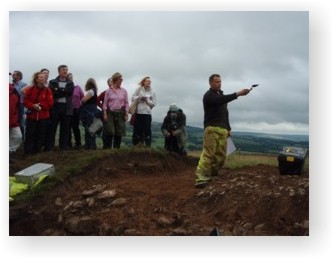 |
On Saturday 16th January ARS Ltd took part in the annual Derbyshire Archaeology Day which is organised by the Peak District National Park Authority and Derbyshire County Council. The day-long event included presentations from various historians and archaeologists about the most recent investigations across Derbyshire. The community-led excavation on Fin Cop Hillfort by Longstone Local History Group and ARS Ltd was featured with a presentation that revealed all the current information about the site and also the story of how it was investigated. The sold-out event was a huge success with around 400 members of the general public.
 |
ARS Ltd have launched a subsite dedicated to Tarmac's Lanton Quarry in Northumberland and the excavations that have been carried out there in 2005 and 2008/2009. Archaeological fieldwork at the site recorded the surviving artefacts and structural remains, and this website provides information on how the excavations were carried out and what they can tell us about the past of north Northumberland.
Additionally this month, archaeological magazine 'Current Archaeology' features a lead article about the Lanton Quarry excavations. For information on how you can order a copy of this month's magazine please click on the magazine cover opposite.
November 2009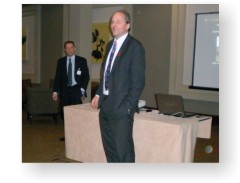
ARS Ltd have recently celebrated five successful years as a limited company with a celebration for staff, friends and clients at the Mercure St. Paul's Hotel in Sheffield. Lord Redesdale attended to make an address on the current work of the All Party Parliamentary Archaeology Group, and Dr. Clive Waddington, Managing Director, reflected on the varied projects and events of the last five years.
As well as being an enjoyable night for all, a number of awards were presented to members of staff by Andy Topley, Director of Regeneration at Creative Sheffield. The winners were:
-
Discovery of the Year - Philippa Cockburn
- Publication of the Year - Ben Johnson
- Employee of the Year - jointly awarded to Jessika Shakarian and Brian Marshall
- Special Award for Services to the Company - Jim Brightman




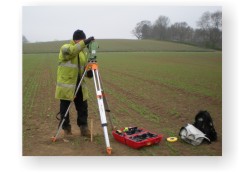
Also in November 2009...
From November 2009 ARS Ltd. is adding in-house Geophysical Survey to the list of services that they provide. Magnetometry will now be offered to assist with exploring and investigating potential archaeological sites. For more information see our Services page.
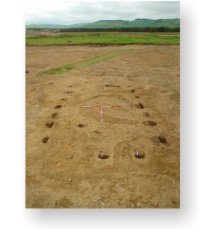
In addition to this, ARS Ltd can announce the publication of the Cheviot Quarry Excavation Report in The Archaeological Journal. The report is the result of a series of archaeological investigations that were commissioned by Tarmac Northern and were carried out at Cheviot Quarry, Northumberland in 2005 (see Cheviot Quarry on the Projects page).
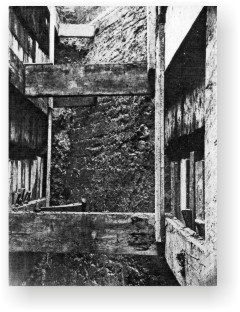
A vision statement for Sheffield Castle is now available to download from our Projects page. For more information and to download the document please see the Sheffield Castle Project page.
(Picture reproduced from Armstrong's 1930 report)
August 2009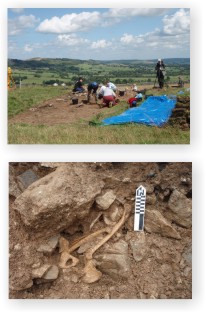
A three week community excavation project has just concluded at an Iron Age hillfort near Monsal Head in the Peak District, which provided unexpected discoveries.
Schoolchildren from Longstone School found hundreds of Mesolithic chipped stone artefacts while excavating test pits in the interior of the hillfort. The test pits also produced over 150 sherds of late prehistoric pottery and a flake from a Neolithic polished stone axe.
A trench over the main rampart of the hillfort provided the most unexpected find of all when a human skeleton was found in the ditch, amongst the destroyed remnants of the bank, suggesting that the hillfort had come to a grim end.
The project was undertaken by Longstone Local History Group with ARS Ltd and was funded by the Heritage Lottery Fund.
For coverage of the discoveries in the wider media please follow the following links:
BBC News Website
Derbyshire Times
Buxton Advertiser
Matlock Mercury
The Star
June 2009
As part of an ongoing project, it came to the attention of ARS Ltd that on a particularly weather-beaten stretch of the North East Coast, there were what appeared to be Bronze Age cairns and cremation burials being actively eroded from the sand dunes.
ARS Ltd undertook a rescue excavation at Low Hauxley to preserve what was left of the remains and now analysis of the pottery vessels and burnt remains will provide not only information about the people who were buried here, but also allow us to date the burials.
February 2009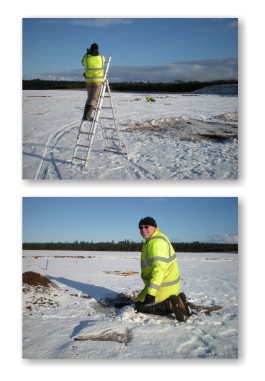
A team from ARS Ltd battled through the recent snowstorms to uncover multi-period archaeological remains in a second phase of work at Tarmac's Lanton Quarry in Northumberland.
Archaeological finds included:
- Midden pits containing prehistoric pottery
- A number of post-built structures including a roundhouse
- Two unusual stone cists - one containing human remains.

